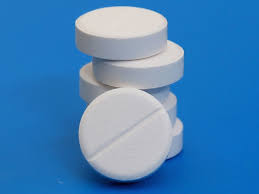However, like everything else that is good in nature, it also has its drawbacks. For every ‘paracetamol’ strength there is a weakness. The most common of these is the fact that it is freely available particularly in this part of the world where a lot of things are considered as part of the norm. It is available to whosoever desires to have it. Some abuse it as a result and others do not know why they are taking it.
It was never clear to me what he was treating and the attendants at the pharmacy did not ask either. It was none of our business but nonetheless, he hurt his system no doubt. It occurred to me to write about this practice when I recently heard an artisan boasting that a certain combination of paracetamol andAlabukunwith a popular brand of beer was a strength booster. That combination can possibly not boost any strength. What it might do is to remove all the natural inhibitions of physical and mental restraints in a person and convey an impression of indestructibility. That is not only a harmful fallacy; it is frankly dangerous. There are a number of reasons why it can be considered harmful and we shall be discussing them in the paragraphs below.
Some of these reasons are related to the dosage of the medicine used by various people and at different body weights, not age. Some are related to the duration of its use and other effects are due to effects resulting from singular large dosages consistent with overdose. A person who takes 40 tablets of paracetamol at once can be expected to suffer some degree of damage very different from another individual who takes four or even six tablets consistently over a three-month period. Thus paracetamol toxicity, which results from the former, results not from the direct effect of the drug itself, but from the activity of its metabolite, an agent called N-acetyl-p-benzoquinoneimine-N-acetylcysteine, on the liver.
Paracetamol is one of the most common causes of poisoning around the world. Damage to the liver is its most prominent injury in the acute phase when up to 12 grammes of acetaminophen is taken by an adult or more than 250 milligrammes per kilogramme body weight in children. It was to reduce the incidence of liver toxicity from paracetamol overdose that legislation was passed in 1998 in the United Kingdom to limit how many tablets an individual can obtain. It is 16 tablets over the counter and 32 in pharmacies where a prescription is required and such prescriptions can be traced.
This is believed to have reduced the incidence of liver damage with associated deaths and liver transplantations in England and Wales but not in Scotland. While some people dispute that rate of decline, there is no doubt that there has been some effect. In our country, an individual can buy an entire can of 1,000 tablets and no questions are asked. I have been part of the management of a 16-year-old girl some 18 years ago who took an unknown number of paracetamol tablets she found in her home together with a sachet of washing soap and some tablets of Valium, all mixed with water, in an attempt to kill herself because she had twice failed the Joint Admissions and Matriculations Board exams and her father was unsympathetic.
Aside from the fact that it could become poison when used wrongly, paracetamol works well as a medication for most of the uses enumerated above, and very reliably when used within the recommended doses for weight. While most of the early damage from drug-induced toxicity is manifested in the liver, kidney failure preceded by reduced urine production and an acute state of confusion can result within three days of such poisoning occurring. Accumulation of lactic acid in the blood as well as low blood sugar levels can also supervene. In this state, even if the person presents early in the hospital, there is often little to find in terms of a clinical evaluation. The picture is usually clearer when the patient develops features of acute liver failure when there will be a pain in the right upper part of the abdomen, jaundice, confusion and what is known as a hepatic flap, a kind of coarse tremor seen in the hands in those people whose liver is on its way to packing up.
Significantly, people who suffer from paracetamol overdose with associated liver toxicity need to have treatment in an intensive care unit, provided the diagnosis has been properly made or is suspected to be cause of the problem evolving in the patient. In the case of the patient mentioned earlier in this essay, we did not have the luxury of an intensive care unit to care for her, but we made do with a naso-gastric tube passed into the stomach through the nose first to pump out what was retained in her stomach and then to give supportive care while waiting for her to recover. For many practitioners in this part of the world confronted with problems like this, nothing more is available to help the victims and many unfortunately die.
Source:Swankpharm

 The drug, paracetamol, is one of the most commonly used medications around the world. It is a drug you can obtain easily across the counter even in the most advanced nations of the world, and it is available in so many different formats. You can get it as a tablet; caplet; syrup; suppository; an injection or an infusion. It is also available as a component of drug compounds in combination medications.
The drug, paracetamol, is one of the most commonly used medications around the world. It is a drug you can obtain easily across the counter even in the most advanced nations of the world, and it is available in so many different formats. You can get it as a tablet; caplet; syrup; suppository; an injection or an infusion. It is also available as a component of drug compounds in combination medications.







